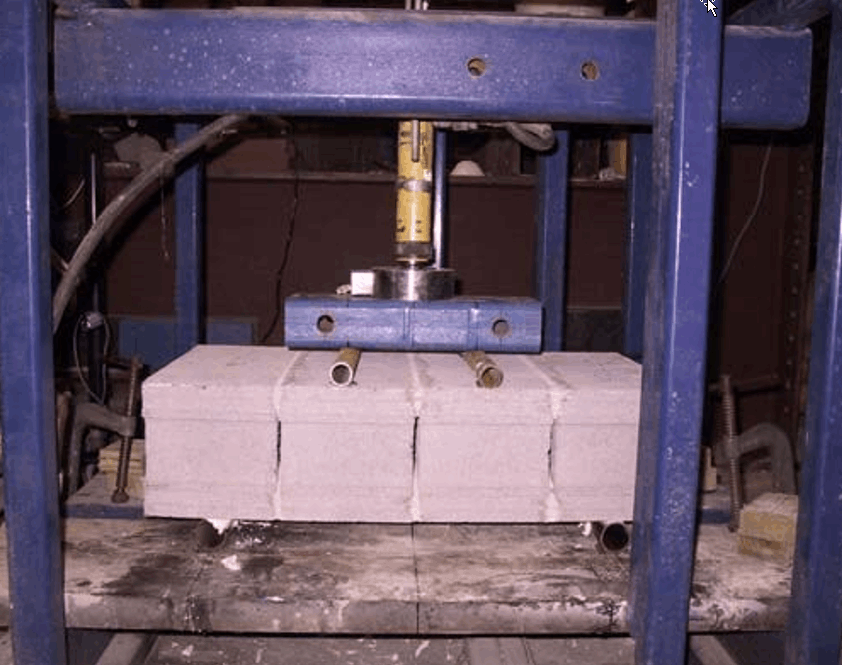W. Mark McGinley1 and Jeff Greenwald2
- Professor, Dept of Architectural Engineering, North Carolina A & T State University, 1601 East Market Street, Greensboro, NC, 27411, mcginley@ncat.edu;
- Vice President of Research, National Concrete Masonry Association, 13750 Sunrise Valley Drive Herndon, VA 20171-4662, jgreenwald@ncma.org
ABSTRACT
In an effort to determine the effectiveness of a proposed hollow unit bond wrench test apparatus, an investigation was proposed. This investigation compared the flexural tensile bond of face shell bedded, four high, stack bonded prisms, constructed with 150 mm, or 200 mm x 400 mm concrete masonry units measured using the procedures in ASTM Standard E 518 to that measured by a bond wrench testing apparatus on two high stack bonded prisms. These tests evaluated a total of two unit sizes and three mortar types at an age of 28 days.
This investigation found that the flexural tensile bond strengths measured using the bond wrench testing apparatus were lower than those measured using the ASTM E 518 procedures. The bond wrench test values appear to be about ½ those measured by the E 518 tests. In addition, the bond wrench test results have higher coefficients of variation than the ASTM E 518 test procedures, and the 150 mm (6 in.) hollow concrete masonry specimens appear to produce high flexural strengths and lower coefficients of variation than for those made with 200 mm (8 in.) units. The observed differences between the flexural tensile bond measured by the two test apparatus may be due to differences produced by the fabrication/curing procedures and specimen size. Further study is required before the proposed bond wrench can be effectively used to predict the flexural tensile bond strength of hollow unit masonry.
KEYWORDS: hollow unit, flexural, bond, testing
6c-1



